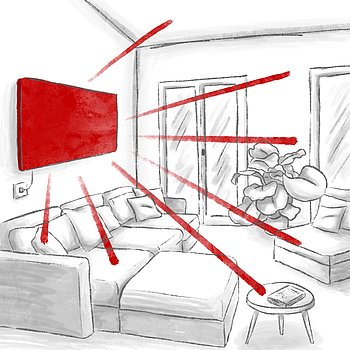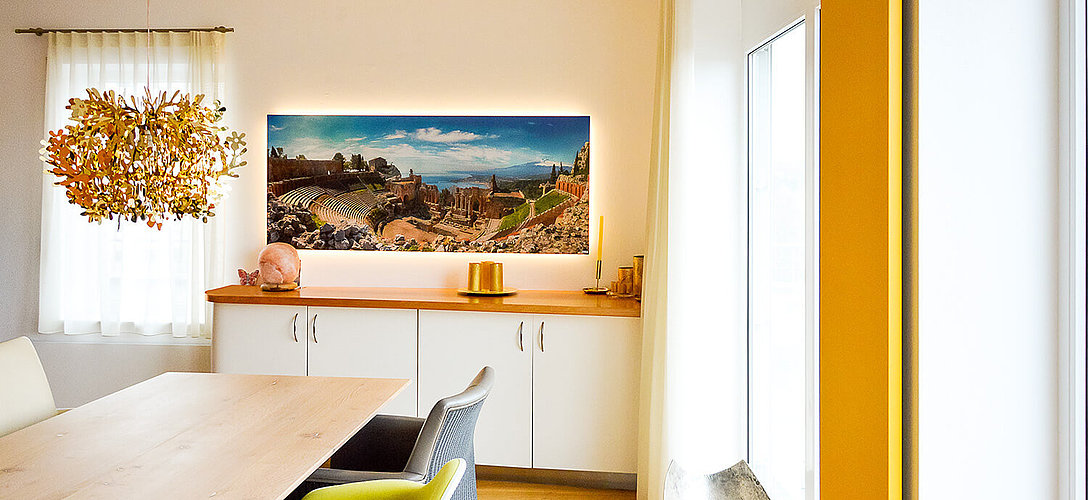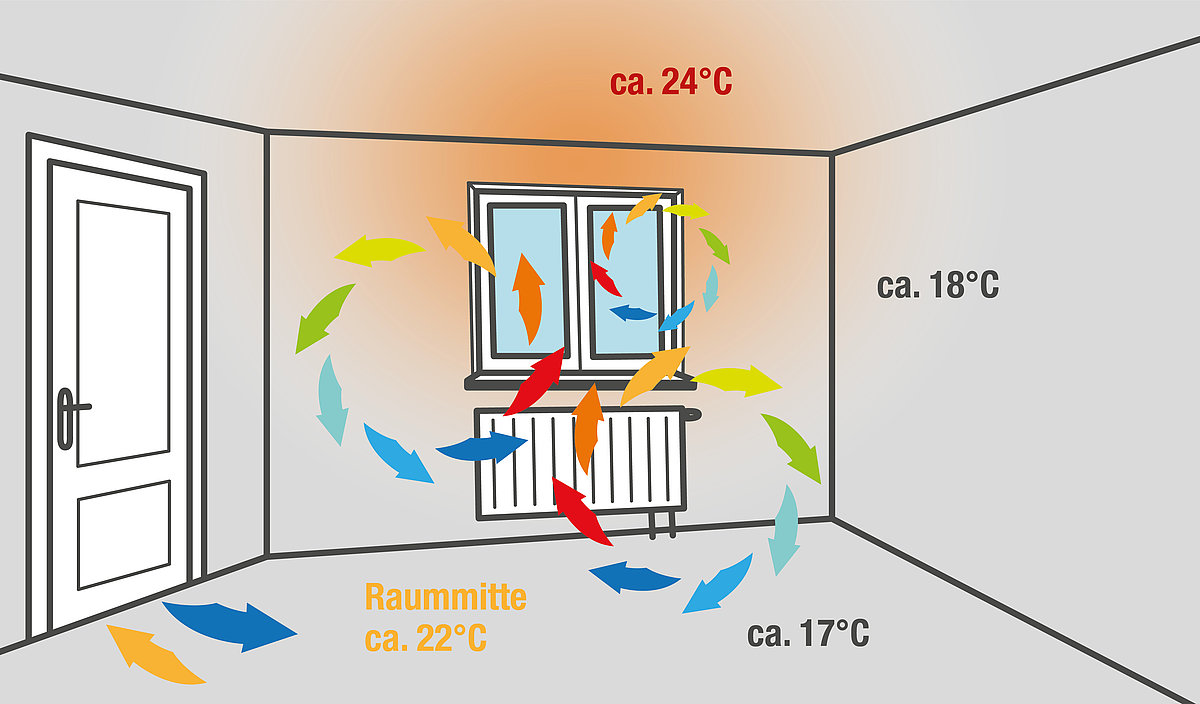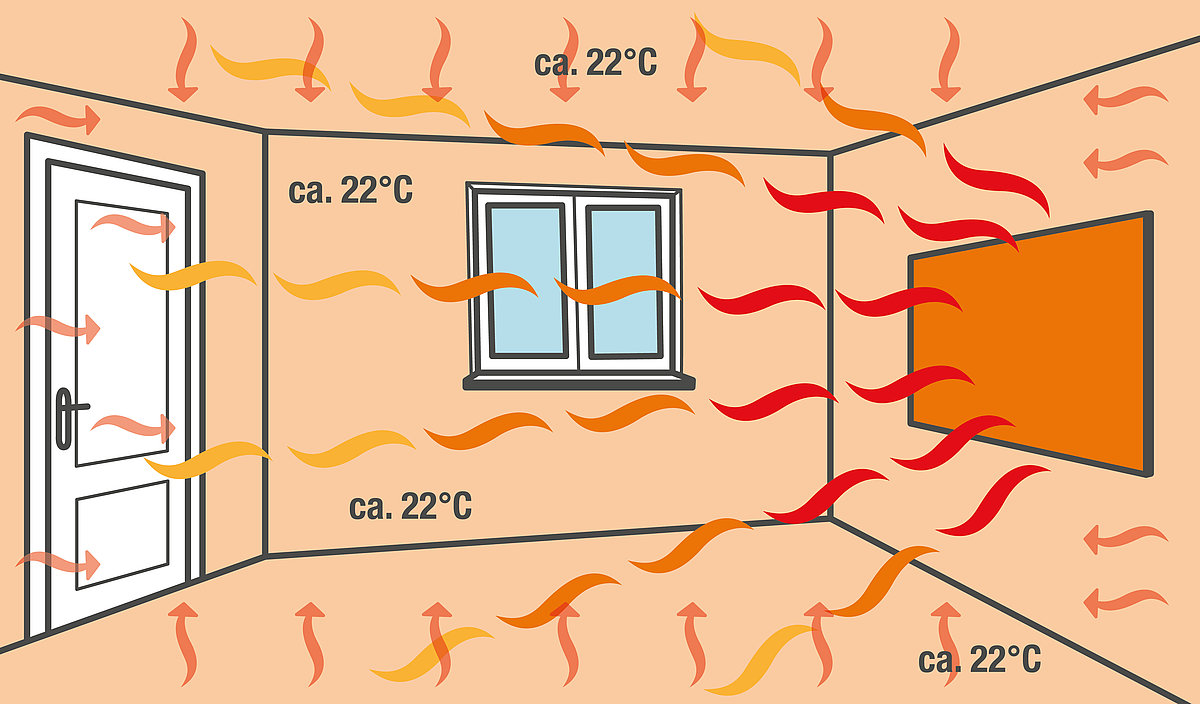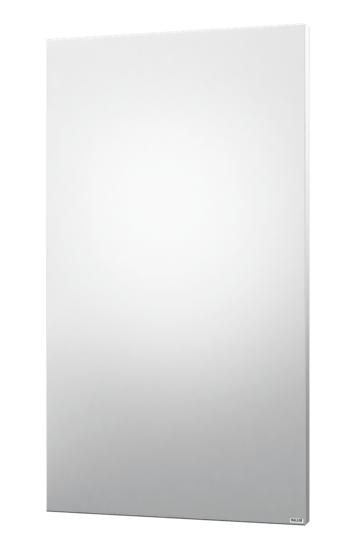The classic infrared heater is a white, flat heating panel with a smooth surface and rounded edges and corners. However, there are many different variants and designs of the infrared heater to make them an eye-catcher in any living space.
– Picture heaters as eye-catchers for all living spaces, even your own motifs are possible
– Mirror heaters for the bathroom or wardrobe
– Glass heaters as an exclusive detail in the living room
– Panel heaters for the children's room or kitchen
– Mobile heaters supported on stands
– Foot heaters for the office
– Infrared heaters with light in the form of LEDs

